One of the most visually striking antiques out there is carnival glass, and some carnival glass can be worth quite a bit of money. However, because of the nature of the glassmaking industry at the time, legitimate pieces of carnival glass can be difficult to identify.
Carnival glass is identified by its distinctive metallic sheen and intricate patterns. Most real carnival glass lacks a maker’s mark, meaning that to determine its origin, collectors need to consult an expert on carnival glass. Carnival glass is found in a variety of colors and patterns.
So, how can people new to collecting carnival glass learn to identify interesting or valuable pieces? Let’s take a look at the characteristics professionals use to identify actual pieces of carnival glass.
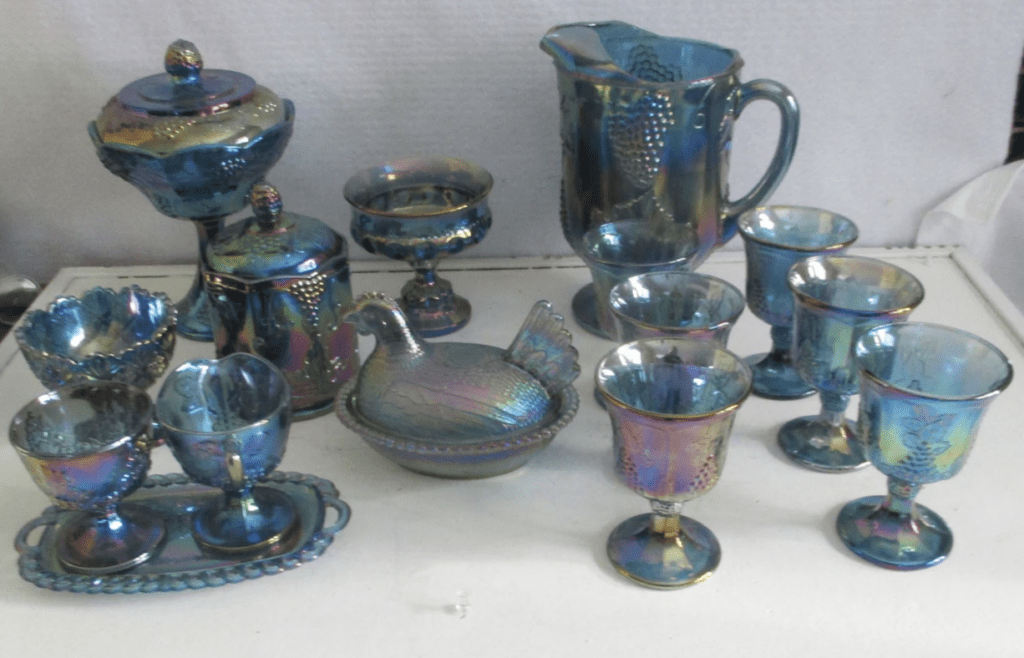
How Can You Tell Real Carnival Glass?
The best tells that you need to look for when determining whether a piece of carnival glass is real or fake come from its unique manufacturing process.
Carnival glass is what’s known as molded and pressed glass, meaning that the glass was first melted, then poured into a mold matching the intended final shape, and then pressed with mineral or metallic salts to give it its famous metallic sheen. Beyond this, carnival glass‘ other most famous feature, the intricate patterns, was meant to hide seams and other imperfections.
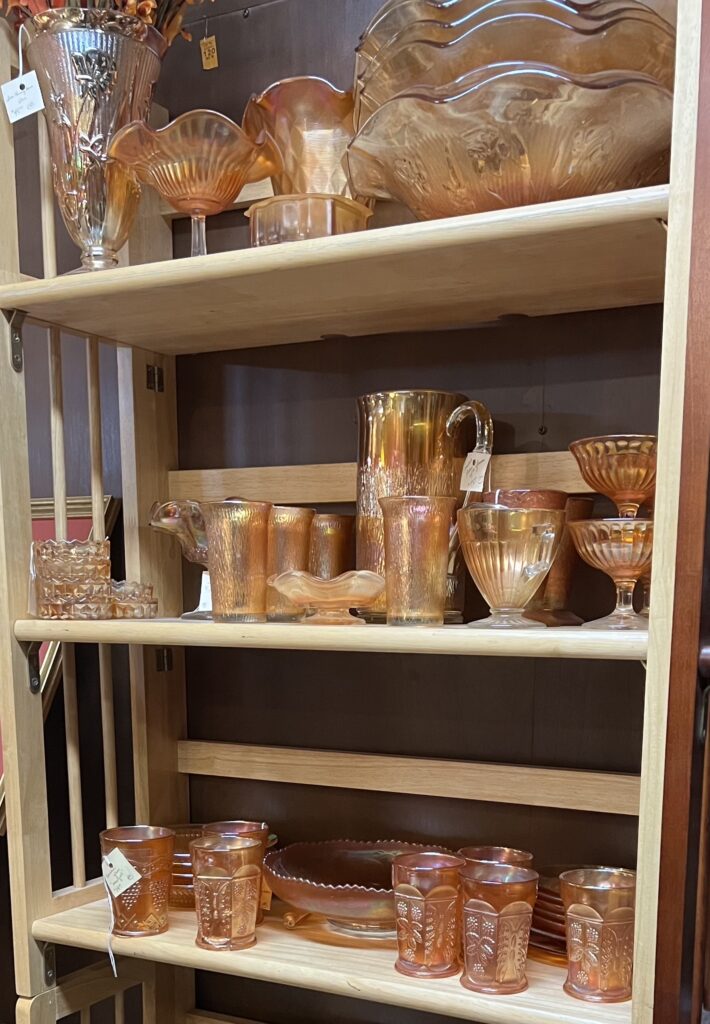
We can use this information to infer a few things about what original carnival glass pieces will look like today:
1: Original pieces either have no seams or have very well hidden seams.
Because the patterns on carnival glass are meant to hide seams, it’s very unlikely that a real piece of carnival glass would have an obvious seam.
2: Many original pieces have experienced some oxidization of metallic elements over the years.
Any carnival glass made using metallic salts that oxidize will have experienced some oxidation in between its manufacture and now. If you know that the piece you’re looking at would have used those kinds of metals for its treatment and yet it lacks oxidization, this is evidence that it was made fairly recently, either as a fake or a reproduction piece.
3: The glass of original carnival glass is evenly distributed as it was molded and pressed rather than blown.
Most collectors trying to identify carnival glass will start by checking to see if there is a lot more glass at the bottom than there is in the rest of the piece. This is a common side-effect of making glass with a poor quality mold. The thickness of the glass should be similar throughout.
4: The bottom of the glass should not be iridized.
In real carnival glass, every part of the piece is iridized except for the base, since that part isn’t meant to be seen. Because of this, the bottom of the glass is the best place to check the glass’ original color before treatment. While checking the base visually, you can also check for hay marks, which are commonly found on glasswork from the period in which carnival glass was made.
You can also sometimes tell real pieces of Carnival Glass by looking at the maker’s mark, but because most real pieces lack a maker’s mark entirely this isn’t always useful.
How Can You Tell How Old Carnival Glass Is?
Now we have reached the hard part. Manufacturers didn’t start marking their glass until after the height of carnival glass manufacturing, meaning that the vast majority of carnival glass can only be identified by researching the specific color and pattern in a database.
While there are a few things that can help suggest the age of your carnival glass, such as oxidization, the only way to actually tell is to match the piece you are looking at with a known pattern either from an original catalog or from modern research. This can be difficult and time consuming.
Fortunately, the most commonly collected carnival glass was only produced for about thirty years between 1908 and the early 1930s. While some companies have survived producing carnival glass to this day, the vast majority of pieces were made before 1925.
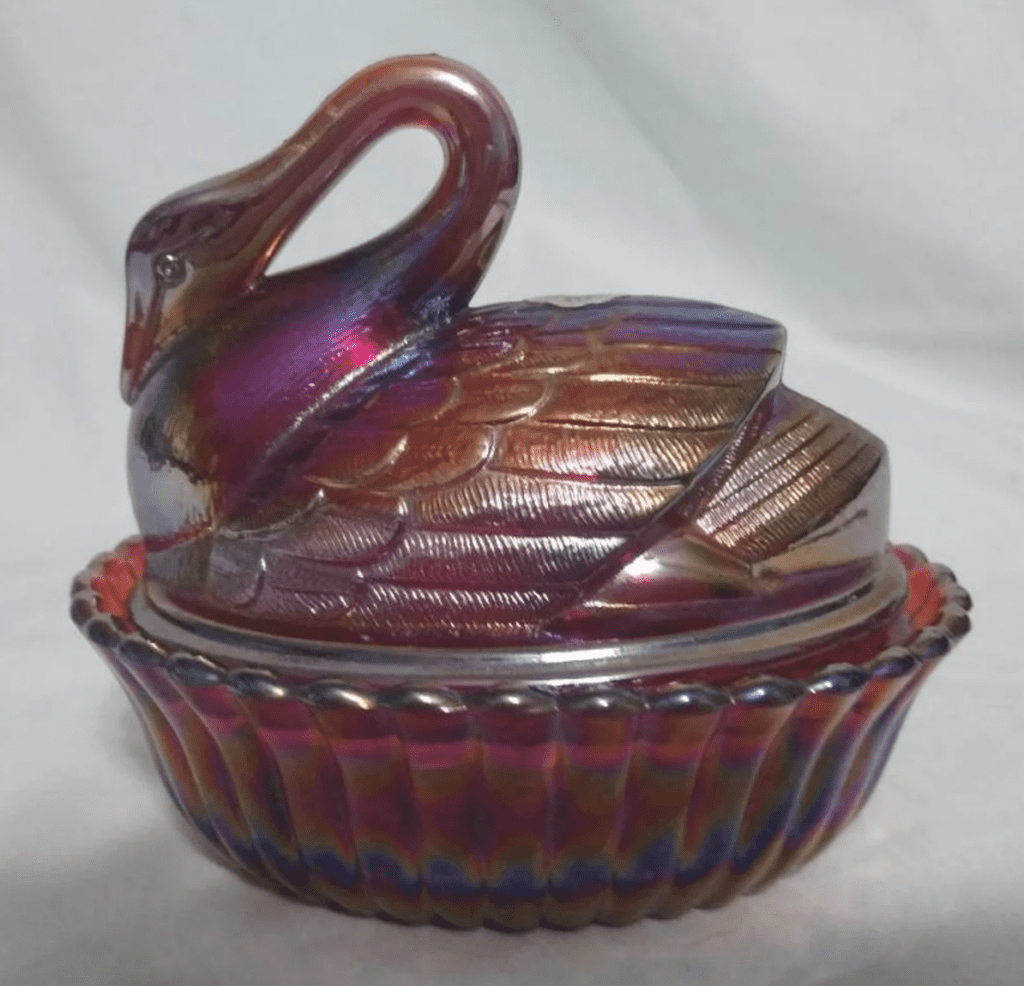
Because of this, most authentic pieces you find are likely to be from that period between 1908 and 1931, and it would actually be less common to find legitimate glassware that was produced after this period.
If you don’t want to go through the effort of looking through the archives yourself, you can bring the piece you’re looking at to a professional, who probably can identify it.
If you’re interested in doing the work yourself, you can find a very well-kept online library at Hooked On Carnival’s library page. Hooked on Carnival is a fairly reputable group within the American carnival glass community, and their database has a good mix of original and secondary sources that you can look through all available for free. Just be prepared for the search to take a while, you will have a lot of sources to look through.
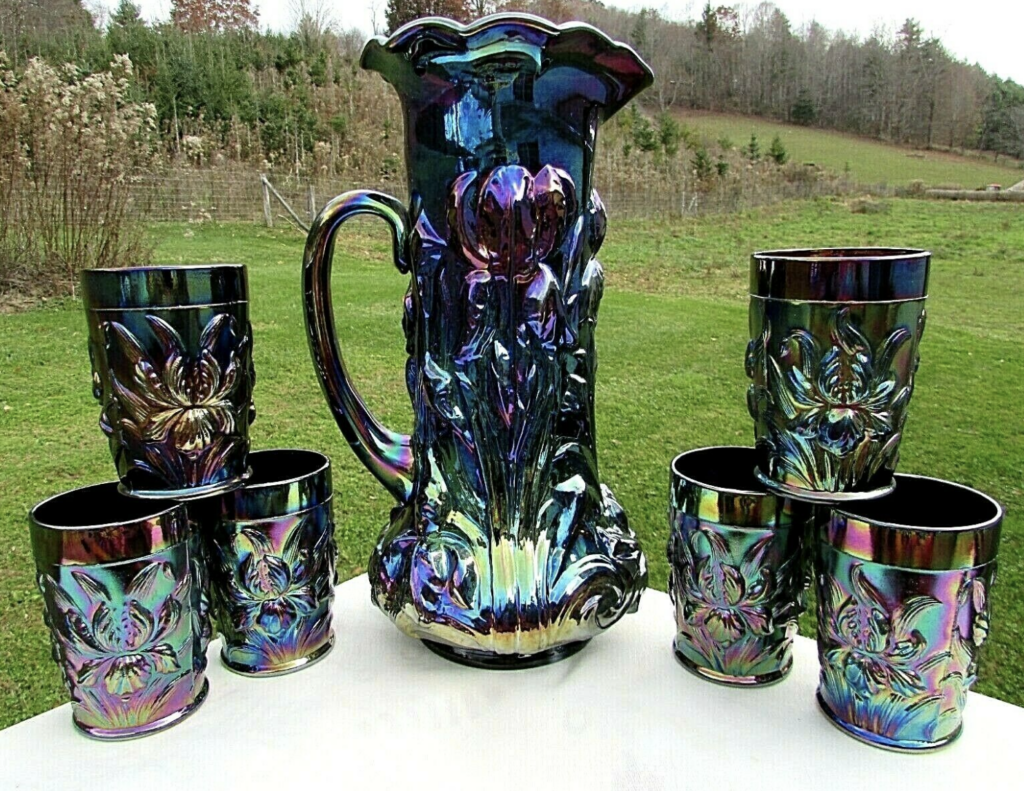
How to Tell Fenton Carnival Glass
Fenton is a fairly prestigious name when it comes to carnival glass manufacturing. Unfortunately, during the period where Fenton was making carnival glass, it did not use a maker’s mark.
The only sure way to identify Fenton glass is to compare the piece that you have with a database. If it matches a recorded Fenton pattern and color in that database, then it is Fenton glass. Otherwise, it was made by another company.
While this is unfortunate, it is just kind of the nature of carnival glass. It didn’t have those distinguishing trademarks that we use so often nowadays, so it’s much more difficult to identify a particular company’s work. In fact, Fenton may not have wanted you to be able to tell their work apart from others in the first place!
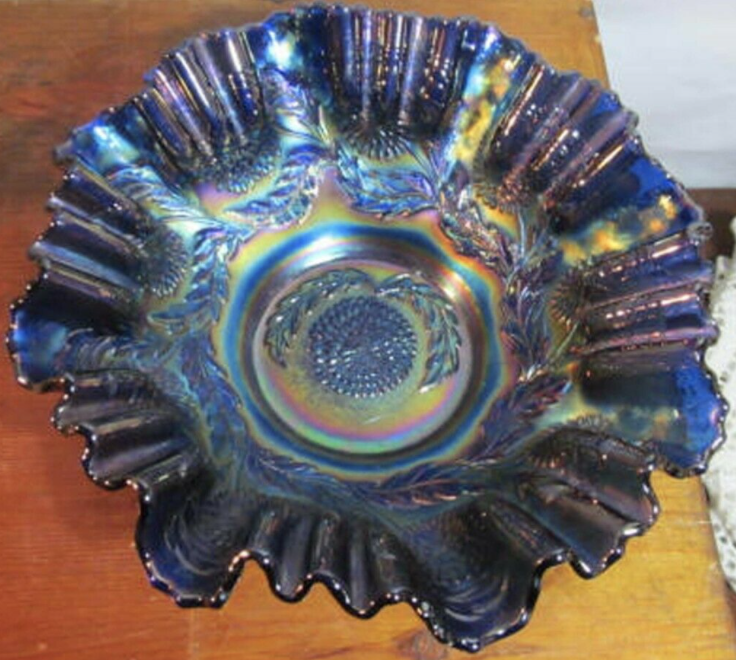
When carnival glass started to be called the “poor man’s Tiffany’s.” Fenton, who wanted to be seen as a company that produced high-quality products for the wealthy, stopped producing carnival glass entirely. Their remaining stock was sold to carnivals to be used as prizes for their games, which is where the name carnival glass came from.
Because of all this, there really aren’t any good tricks you can use to identify Fenton carnival glass specifically. You’ll have to either consult with a professional or put in the work looking through the records to find the answer yourself.
What are the Different Patterns of Carnival Glass?
There are thousands of different patterns of carnival glass. Many common patterns are modeled after nature.

Birds, insects, flowers, and fruits were all commonly depicted on carnival glass. It would be impossible to fit an exhaustive list of the patterns used on carnival glass in a written work of this length, but you can get started on learning about carnival glass patterns by looking at a few of the old catalogs from the library that was linked earlier.
Are there Markings On Carnival Glass?
Most carnival glass doesn’t have a maker’s mark, although some of the later pieces have one. It isn’t a good idea to rely on marks to determine whether carnival glass is legitimate or not because there isn’t a single company that consistently used them during the period when carnival glass was commonly produced.
Some carnival glass pieces have markings, but they were not made consistently.
How to Identify Norwood Carnival Glass?
While some later Norwoods have a maker’s mark, most original Norwoods lack this mark. Because of this, the best way to identify a Norwood is to look at the list of patterns and colors made by Norwood and compare it to whatever piece you’re looking at.

Although Norwood made hundreds of unique patterns, they did only use a couple of colors. They used green, amethyst, cobalt blue for their carnival glass, and you can identify these colors by looking at the base of the glass.
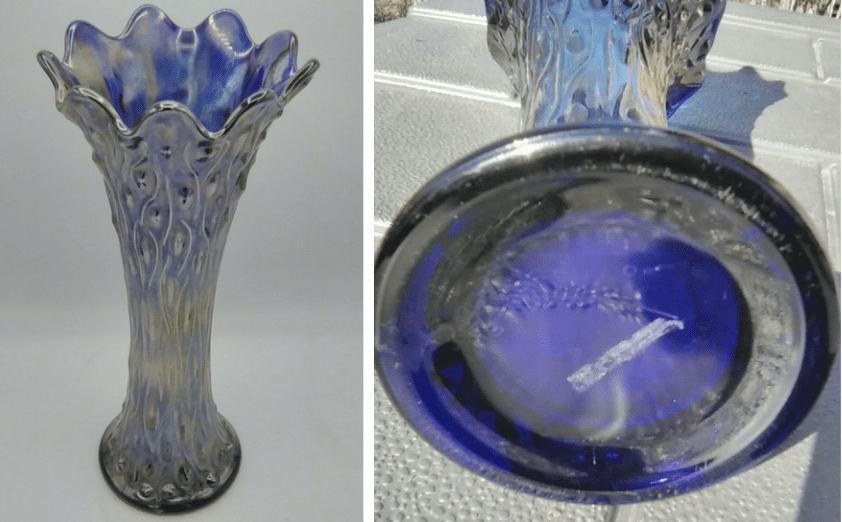
Is Carnival Glass Blown Glass?
Carnival glass is not blown glass. Instead, it is molded and then pressed with metallic salts to give it its characteristic qualities.
There are a number of ways that you can tell whether the glass was blown or molded. The biggest difference is that blown glass tends to have more prominent seams where bits were stuck together. Also, blown glass is not extremely symmetrical, while many molded pieces (including a lot of carnival glass) are extremely symmetrical, especially when it comes to the patterns.
How to Find Someone to Identify Your Carnival Glass
If you have been thinking something along the lines of “Wow, I sure don’t want to identify this myself, this looks hard,” you might want to find someone to help you identify your piece(s) of carnival glass. There are plenty of places where you might go to get a piece of Carnival Glass identified. Your local antique dealer is a great place to start, as they likely have some experience with carnival glass.
If you don’t have an antique dealer near your home, you can always try looking online. There are plenty of people who are willing to help you identify your carnival glass if you’re willing to send them a picture.
InstAppraisal.com is an extremely helpful forum, although it may be a little less accurate than other appraisers as a mix of professionals and hobbyists are likely to all answer your question and appraise your carnival glass.
Heritage Auctions is more reputable although in order to get an appraisal for anything other than auction purposes you’ll need to give them money. On the other hand, a formal appraisal might be what you need if you’re looking to take out an insurance policy on your family’s heirlooms.
Worthpoint requires a monthly subscription for access, but it also makes it easy to get accurate information on thousands of different antiques including carnival glass.
If you just want to identify the piece and don’t need it appraised, you might be able to use Hooked on Carnival’s pattern database, in which you can enter a list of elements on your piece’s pattern and get back a list of pieces that have those elements. This is a good tool to use if you don’t want to talk to any other people or look through a hundred years worth of research books and catalogs.
Dr. Lori Vendarme is an expert who specializes in carnival glass and will appraise any piece worth less than sixty dollars for free. She is slightly famous outside of the field for her occasional TV appearances, but because she doesn’t buy the antiques from you herself it seems unlikely that her appraisals are a scam.
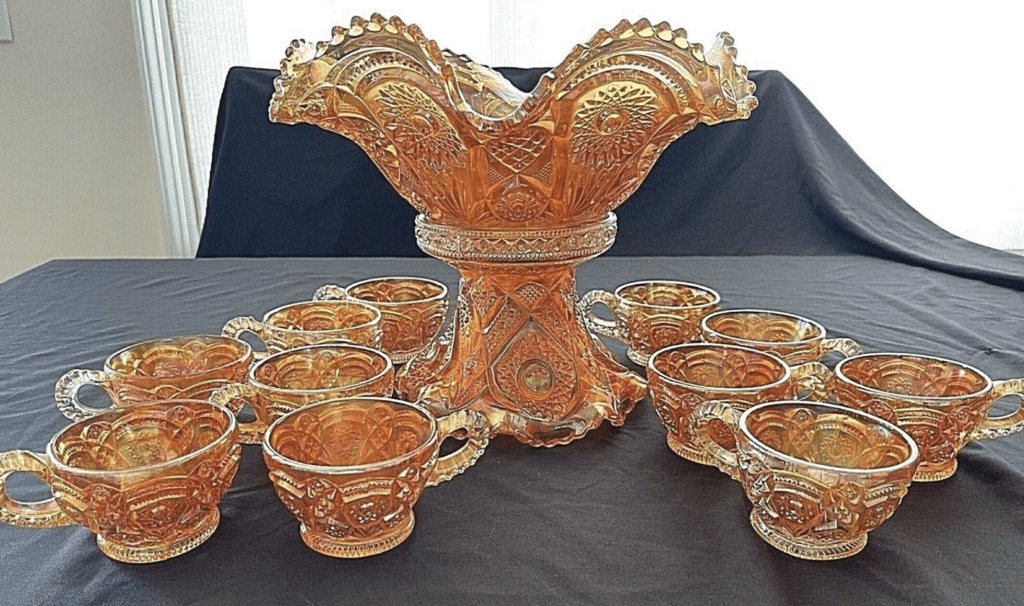
However, if your piece of carnival glass is worth at least sixty dollars, the appraisal does end up costing fifty-nine dollars, which means that if you suspect that the thing you want to be appraised is worth between fifty-nine and one-hundred dollars, it might not be a good idea to use her services.
Be careful when looking at appraisal sites as a lot of them are some variation of a scam. Be wary of free appraisals that ask for your credit card information or that claim to be free on one page and then cost money on the next one. If somebody really can give you a free appraisal as part of their business model, then they won’t need to lie to you about it or get any of your card information.
You should also be wary of appraisals that give you very high or very low estimates, especially if the appraiser makes an offer on the piece after they are done appraising it. Some pieces do have very low or high values, but if you suspect foul play, it is usually a good idea to get a second opinion.
People who are looking to sell antiques are often good targets for scams, so during the process of finding someone to do this work for you, be sure to keep your wits about you and pay attention to red flags.
For more information, check out our carnival glass safety guide.

